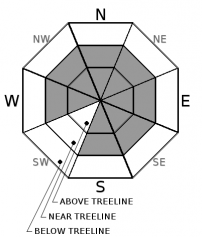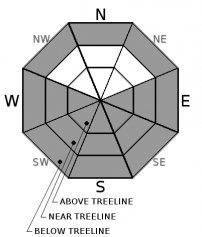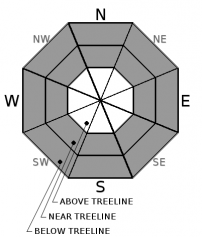| Monday | Monday Night | Tuesday | |
|---|---|---|---|
| Weather: | Mostly cloudy. Chance of snow showers in the morning. | Partly cloudy then becoming clear. | Sunny |
| Temperatures: | 34 to 39 deg. F. | 21 to 27 deg. F. | 44 to 49 deg. F. |
| Mid Slope Winds: | W | N | |
| Wind Speed: | 10 to 15mph. Gusts to 35mph decreasing to 25mph in the afternoon. | 10 to 15mph with gusts to 35mph. | Light winds. |
| Expected snowfall: | Up to 1 | 0 | 0 |
| Monday | Monday Night | Tuesday | |
|---|---|---|---|
| Weather: | Mostly cloudy then becoming partly cloudy. Slight chance of snow showers. | Partly cloudy then becoming clear. | Sunny |
| Temperatures: | 29 to 35 deg. F. | 20 to 25 deg. F. | 40 to 46 deg. F. |
| Ridge Top Winds: | W | N | NE |
| Wind Speed: | 15 to 25mph. Gusts to 65mph decreasing to 40mph in the afternoon. | 15 to 25mph. Gusts to 45 increasing to 60mph after midnight. | 20 to 30mph. Gusts to 70 decreasing to 55mph in the afternoon. |
| Expected snowfall: | Up to 1 | 0 | 0 |





























